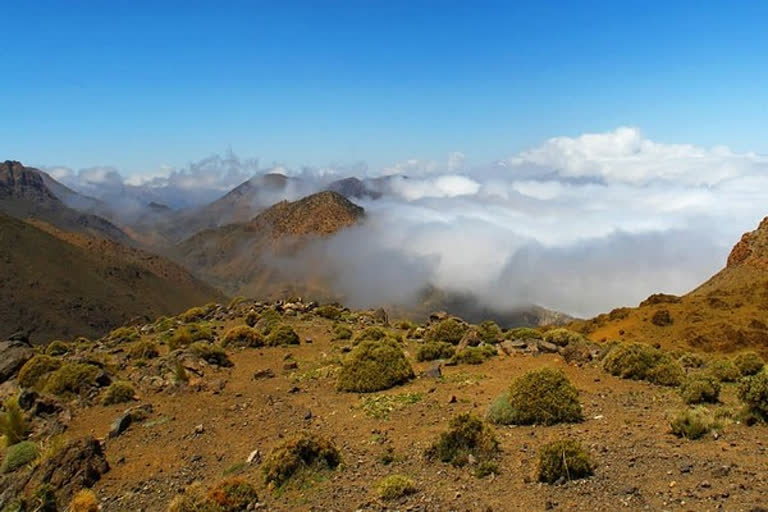Washington: Giant planets in our solar system and circling other stars have exotic clouds unlike anything on Earth and the gas giants orbiting close to their stars -- so-called hot Jupiters -- boast the most extreme.
A team of astronomers from the United States, Canada and the United Kingdom has now come up with a model that predicts which of the many types of proposed clouds, from sapphire to smoggy methane haze, to expect on hot Jupiters of different temperatures, up to thousands of degrees Kelvin.
Surprisingly, the most common type of cloud, expected over a large range of temperatures, should consist of liquid or solid droplets of silicon and oxygen, like melted quartz or molten sand. On cooler hot Jupiters, below about 950 Kelvin (1,250 degrees Fahrenheit), skies are dominated by a hydrocarbon haze, essentially smog.
The model will help astronomers studying the gases in the atmospheres of these strange and distant worlds since clouds interfere with measurements of the atmospheric composition. It could also help planetary scientists understand the atmospheres of cooler giant planets and their moons, such as Jupiter and Saturn's moon Titan in our solar system.
Read |Cosmic ring of fire: Astronomers see super-rare type of galaxy
"The kinds of clouds that can exist in these hot atmospheres are things that we don't think of as clouds in the solar system," said Peter Gao, a postdoctoral fellow at the University of California, Berkeley, who is the first author of a paper describing the model that appeared May 25 in the journal Nature Astronomy.
"There have been models that predict various compositions, but the point of this study was to assess which of these compositions matter and compare the model to the available data that we have."
The study takes advantage of a boom over the past decade in the study of exoplanet atmospheres. Though exoplanets are too distant and dim to be visible, many telescopes -- in particular, the Hubble Space Telescope -- can focus on stars and capture starlight passing through the atmospheres of planets as they pass in front of their stars.
Read |Weather better for historic SpaceX launch of NASA astronauts
The wavelengths of light that are absorbed, revealed by spectroscopic measurements, tell astronomers which elements make up the atmosphere. To date, this technique and others have found or inferred the presence of water, methane, carbon monoxide and carbon dioxide, potassium and sodium gases and, in the hottest of the planets, vaporized aluminum oxide, iron and titanium.
But while some planets seem to have clear atmospheres and clear spectroscopic features, many have clouds that completely block the starlight filtering through, preventing the study of gases below the upper cloud layers. The compositions of the gases can tell astronomers how exoplanets form and whether the building blocks of life are present around other stars.
"We have found a lot of clouds: some kinds of particles -- not molecules, but small droplets -- that are hanging out in these atmospheres," Gao said. "We don't know what they are made of, but they are contaminating our observations, essentially making it more difficult for us to assess the composition and abundances of important molecules, like water and methane."
Ruby Clouds
To explain these observations, astronomers have proposed many strange types of clouds, composed of aluminum oxides, such as corundum, the stuff of rubies and sapphires; molten salt, such as potassium chloride; silicon oxides, or silicates, like quartz, the main component of sand; sulfides of manganese or zinc that exist as rocks on Earth; and organic hydrocarbon compounds. The clouds could be liquid or solid aerosols, Gao said.
Gao adapted computer models initially created for Earth's water clouds and subsequently extended to the cloudy atmospheres of planets like Jupiter, which has ammonia and methane clouds. He expanded the model even further to the much higher temperatures seen on hot gas giant planets -- up to 2,800 Kelvin, or 4,600 degrees Fahrenheit (2,500 degrees Celsius) -- and the elements likely to condense into clouds at these temperatures.
